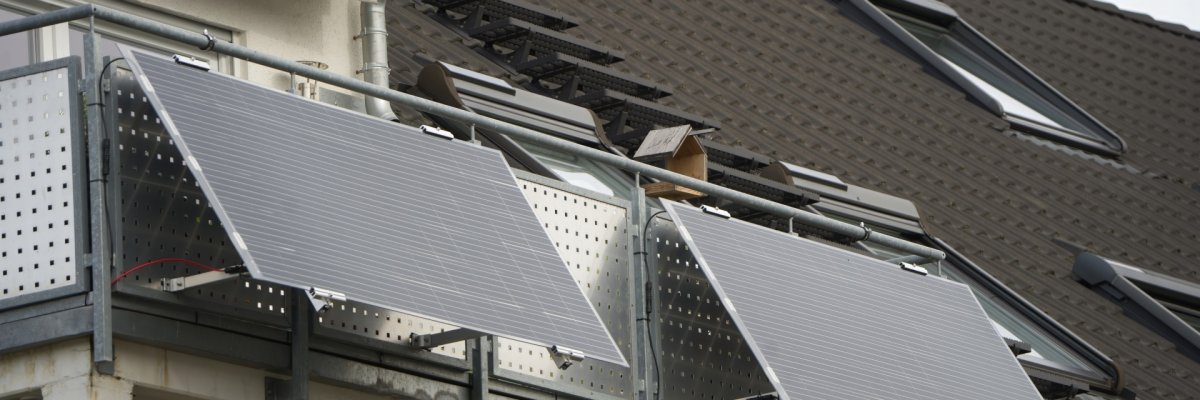Ready-to-connect balcony PV systems
"Plug-in balcony PV systems" consist of one or two solar module(s) that generate electricity from sunlight. This electricity is converted from direct current into standard household alternating current via an inverter. This means that the self-generated solar power can be used directly in the house or apartment by connecting it to an existing circuit.
How does a plug-in balcony PV system work?
The electricity generated from a "plug-in balcony PV system" flows into the electricity grid of the house or apartment to the connected appliances and is consumed there. If the self-generated electricity is not sufficient to operate the connected household appliances, the amount of electricity drawn from the public grid is increased. If more electricity is generated than is consumed, the surplus flows back into the grid. Depending on the number of connected electrical appliances and their power requirements, a private household consumes electricity 24 hours a day, 7 days a week. The so-called base load of electricity consumption results from the operation of permanently connected appliances such as routers, refrigerators, freezers, etc. and possibly also from various appliances in stand-by mode. Generating electricity via a "plug-in balcony PV system" helps to cover this base load of a household and at the same time reduces the amount of electricity drawn from the public grid. This can reduce the household's electricity bill.
Investing in such a "plug-in balcony PV system" can also be interesting if the household has no other options for installing a larger photovoltaic system.
